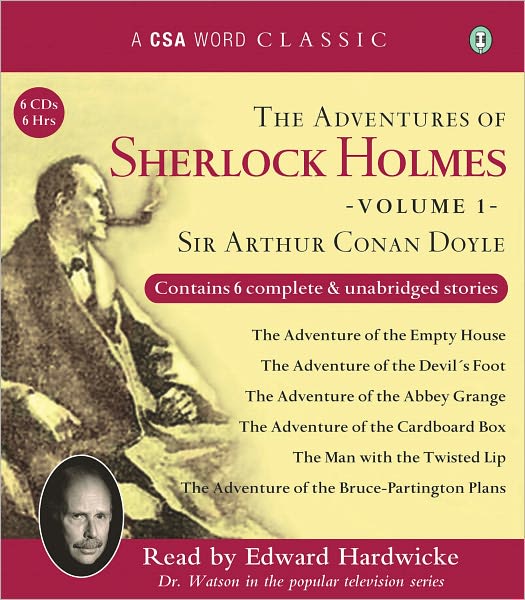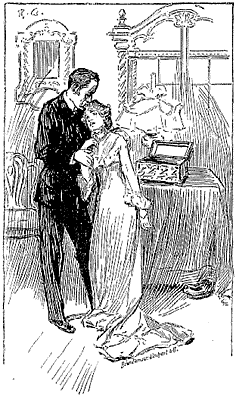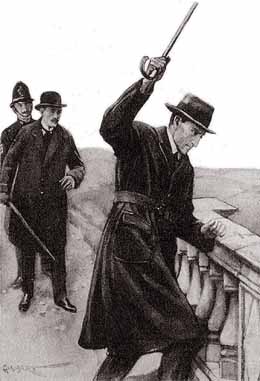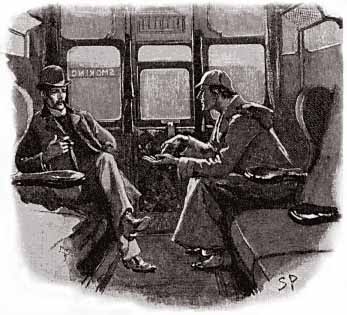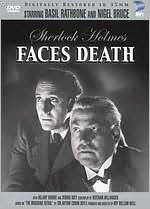Mark Frost; Publisher: Avon (July 2005)
[Warning: The following review most likely contains spoilers for The List of Seven despite my best efforts to the contrary. My review of The List of Seven can be found here.] “Do you know what you find, down here”—[Jack Sparks] stabbed a fist sharply into his gut—“when every article of civility, every habit, cherished memory, every manufactured shred of this puppet we assume ourselves to be is stripped off us like the skin of an animal?”
Doyle swallowed hard. “Tell me.”
“Nothing…A void. No sight, no sound, no thought; not a ripple of the faintest echo. That’s the secret at the base of the stairs that no one is supposed to find. They warn you when we’re young: Don’t look down there, children; stay here by the fire and we’ll tell you the lies our parents beat into us about the greater glory of man. Because they know coming face-to-face with that emptiness would obliterate every trace of who you thought you were like a beetle crushed under a jackboot” (236).

If you have read, or are even tangentially familiar with the plot of The List of Seven by Mark Frost, then you were probably able to follow that story to its logical conclusion, and imagine where the novel’s climax would find Jack Sparks. You now know what happened to Frost’s dynamic and debonair secret agent for the British crown—and his malevolent archenemy and brother, Alexander Sparks. That said, if you have been able to follow me thus far, then you can probably also imagine where Mark Frost’s sequel, The Six Messiahs, finds Jack Sparks. But if you think that Sparks is the same character that you left behind in The List of Seven, then you would be wrong, because Jack Sparks is very much changed. He is not the same man. Set in 1894, The Six Messiahs takes place ten years after the conclusion of the first novel’s narrative. Jack Sparks has been lost, along with his wicked brother Alexander, in their clash at the Reichenbach Falls. And Arthur Conan Doyle is now a successful man, having made his name as a writer of stories, which feature a character modeled largely on his late friend. However, as the novel opens, Doyle has just dispatched Sherlock Holmes in “The Final Problem,” in a manner eerily similar to that of Sparks’s fate. In addition, Doyle is about to embark on a lengthy book tour of the United States, with his brother Innes along as his secretary. But when a rare book dealer on board their ship is murdered, and an elderly priest reveals himself to be Jack Sparks in disguise, Doyle momentarily believes: “This is, indeed, like the old days” (EMPT). But he is very wrong, as is almost immediately revealed. Because as was said before, Jack Sparks is not the same flamboyant, energetic, “James Bond-esque” figure that graced the pages of The List of Seven. Sparks is a greatly changed man. He is angry, distant, and withdrawn; prone to dark moods before his plunge over the waterfall—his temper is now positively black. And he is snappish, even with his old friend. When Doyle suggests to Sparks that he would have been happy, all those long years, just to know that Jack was still alive, Sparks assures Doyle that he is not alive: “Not in the way you suppose when you say it. Not in the way you assume” (122). And if Mark Frost’s Doyle does indeed model Sherlock Holmes after Jack Sparks, then this angry, even violent, “post-hiatus” Sparks is perfectly in keeping with the Sherlock Holmes with which most readers are familiar, even if they do not realize it.
It is often commented that the Great Detective is very different when he reappears in the stories Doyle wrote after his long time away from his most famous character. For instance, the Sherlock Holmes of “Charles Augustus Milverton” is not the same Sherlock Holmes as in “A Case of Identity.” Sherlock Holmes is much changed when he reappears after his three years of being presumed dead. As Graham Moore points out in The Sherlockian, “After the Great Hiatus, when Holmes returned in those later stories, he was just different. Meaner. Colder. He starts manipulating witnesses for information. Lying to people. Committing crimes himself if he thinks it will serve his cause…He becomes a real bastard” (163-4). And Jack Sparks is most certainly quite a bastard after he reappears in Doyle’s life. Whatever happened to him during his long time away has left him scarred, both physically and emotionally, and sometimes the reader—and Arthur Conan Doyle—worries that the old Sparks has, indeed, been lost entirely. And again, as in The List of Seven, Frost’s Doyle is a fully-formed character, standing on his own merits and abilities, and does not play a bumbling “Watson-esque” foil to Sparks’s Sherlock Holmes. In The List of Seven, Doyle behaves really more as a detective than a doctor, and that has not changed in this novel. Doyle is more than capable of deducing the smallest details of those around him—and he often does—and receives the same astonished reactions that could be taken directly from one of his own stories. When he evaluates a fellow passenger—accurately inferring all of the man’s major characteristics, from his religion to his country of origin to his recent travels—even Doyle’s own brother seems pleasantly baffled (53). Frost has rendered an Arthur Conan Doyle that the reader wants to follow around for 450 pages, a Doyle who is a man of action and decision, and who does not sit idly by and wait for Jack Sparks to tell him what to do.
Several characters from The List of Seven make appearances in this sequel, if only briefly. Featured largely is the beautiful and enigmatic Eileen Temple, Doyle’s former love interest. She is now part of a traveling theater group with the slightly ominous name the “Penultimate Players,” which is run by the moronic Bendigo Rymer. Her path will cross again with Doyle and Sparks in a rather cataclysmic fashion, though their stories run parallel for most of the novel. There is also a brief appearance by Larry, whose rough edges and uncouth manners seem to have softened and mellowed with the passing years. Larry is the remaining member of the set of twins who worked for Jack Sparks in The List of Seven, and seemed to foreshadow Sherlock Holmes’s own Irregulars. And speaking of the Irregulars—the Baker Street Irregulars (BSI), that is—an apparent very early incarnation of that famous Sherlockian society tries to introduce itself to Arthur Conan Doyle once the author arrives in New York City. For his part, Doyle has very little patience for the group’s fanaticism—and his impatience is only due in part to the ongoing criminal investigation. “…Doyle had never heard of [the Baker Street Irregulars], which according to [Doyle’s tour manager] had sprouted out of Sherlock mania like a wild toadstool” (117). Unfortunately, Doyle’s first encounter with the adoration of Sherlock Holmes’s fans is awkwardly and poorly (if humorously) received. Although Doyle is polite, the early BSI members are left to themselves in the hotel lobby. With The Six Messiahs, Mark Frost presents his readers with another remarkable and unique Doyle-as-Sherlock-Holmes pastiche. His novel features characters that are brightly original in their own right, and yet faintly familiar echoes of the ones we already know and love. The reader knows that Doyle will ultimately return to writing stories featuring the character-who-was-Jack-Sparks, but Frost’s novel keeps the reader turning the pages—guessing and hoping all the while—and waiting to discover how and in what form Jack Sparks will eventually return (in every sense of the word)—not just the why and where of it.
oOo
More information about The Six Messiahs, and other works by Mark Frost is available on the author’s website. You can also follow him on Twitter.

